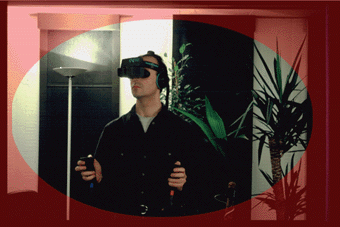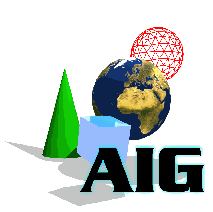
 Software on the other hand, as is
generally the case, lags quite a way behind, and writing code to make
interactive virtual environments of any complexity is a laborious task.
Core techniques and algorithms need to be developed to solve some of the
current problems, and experiments need to be done with prototype
environments. Given such tools and understanding however the great
challenge is to find ways of "putting it all together". And that means the
right frameworks and architectures to support us in doing the things we
want to achieve, under a single roof, without it feeling cluttered, limited
and claustrophobic. Modelling worlds to be experienced interactively raises
new challenges for system architecture, and also raises some quite
philosophical issues about what appropriate models for such "realities"
are.
When you get architectures right, all of a sudden you can do a lot of very
powerful things very flexibly, and a many of your previous difficulties
fall away.
Our specific core activity in the AIG is to develop such systems
architectures for supporting VR.
Software on the other hand, as is
generally the case, lags quite a way behind, and writing code to make
interactive virtual environments of any complexity is a laborious task.
Core techniques and algorithms need to be developed to solve some of the
current problems, and experiments need to be done with prototype
environments. Given such tools and understanding however the great
challenge is to find ways of "putting it all together". And that means the
right frameworks and architectures to support us in doing the things we
want to achieve, under a single roof, without it feeling cluttered, limited
and claustrophobic. Modelling worlds to be experienced interactively raises
new challenges for system architecture, and also raises some quite
philosophical issues about what appropriate models for such "realities"
are.
When you get architectures right, all of a sudden you can do a lot of very
powerful things very flexibly, and a many of your previous difficulties
fall away.
Our specific core activity in the AIG is to develop such systems
architectures for supporting VR.Two components have been developed, loosely speaking one deals with the world as you experience it, and one with the underlying "Reality" behind that appearance.
home page